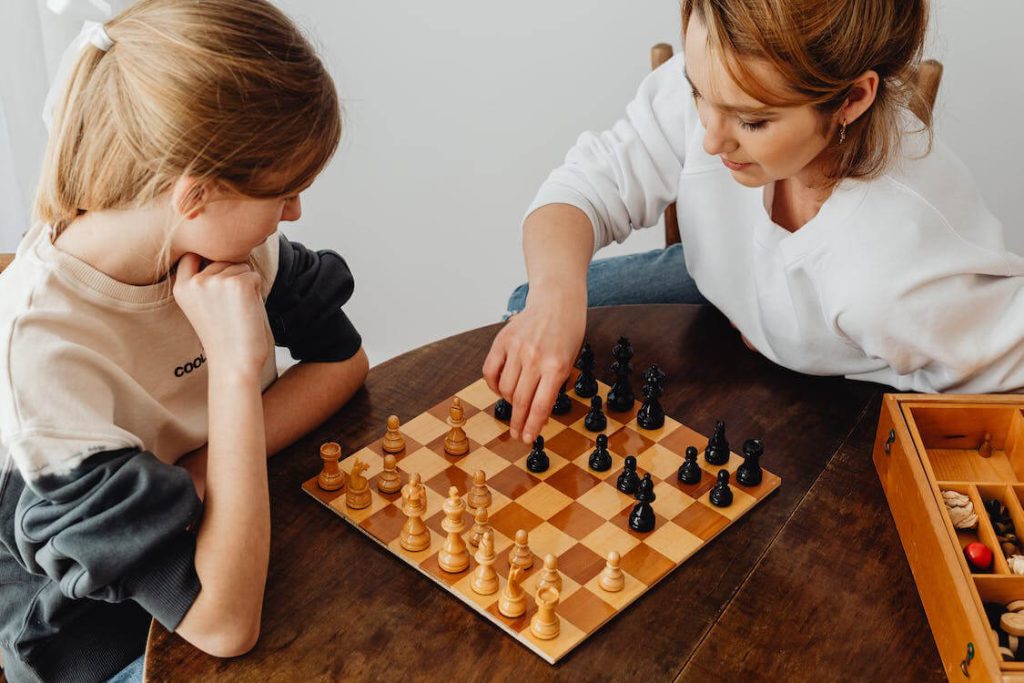No products in the cart.
Chess News, Events & Blogs
Chess and Math: The Surprising Connection
There is a surprising connection and captivating correlation between the ancient game of chess and the intriguing world of mathematics. Discover how the strategic and tactical planning inherent in chess involves mathematical principles and how modern chess engines employ complex algorithms to analyze the game. Gain valuable insights into how mastering mathematical concepts can help you elevate your chess game and how playing chess can enhance your proficiency in mathematics. This article illuminates the enthralling intersection of chess and math, and how this remarkable relationship has impacted the game and its enthusiasts.
Table of Contents
Chess and Mathematics: A Brief History
Chess and mathematics have been intertwined since the inception of the game. From the earliest versions of the game in India to the modern era of computer chess, mathematics has played a significant role in the development and evolution of chess.
The origins of chess can be traced back to the Gupta Empire in India, where a game called Chaturanga was played in the 6th century AD. Over time, the game evolved, and by the 10th century, it had spread to the Islamic world. Muslim scholars began to study the game and developed advanced mathematical theories and strategies for playing it. They were particularly interested in the ways that chess could be used to study geometric and algebraic concepts, and their work laid the foundation for modern mathematics. In the 15th and 16th centuries, chess became increasingly popular in Europe, and European scholars began to develop their own mathematical theories about the game. The Italian mathematician Luca Pacioli wrote a book called “De Ludo Schaccorum” in 1496, which is considered one of the earliest works on the mathematics of chess. In the 20th century, chess and mathematics became even more closely linked with the advent of computer chess. Computer chess has become a fascinating field of study for mathematicians and computer scientists alike, as it presents a unique challenge in developing algorithms that can outperform human players. Today, chess and mathematics continue to be intertwined, with many chess players using mathematical principles to improve their game including probability, logic, and pattern recognition.
How Chess Enhances Math Skills
Chess is not just a game of strategy and critical thinking, it’s also a great way to enhance math skills. In fact, many experts believe that playing chess regularly can help improve math abilities in children and adults alike.
One way chess helps enhance math skills is through the development of logical and analytical thinking. When playing chess, players must analyze the board and plan several moves ahead. This requires breaking down complex problems into smaller, more manageable parts and using logical reasoning to solve them. These same skills are essential in math, where problem-solving requires the ability to break down complex equations into smaller parts and use logical thinking to solve them. Another way chess enhances math skills is through the development of spatial reasoning. Chess requires players to visualize the board and think about how their moves will affect the pieces on the board. This requires spatial reasoning skills, which are also important in math. Furthermore, chess teaches players to think abstractly. The pieces on the board represent abstract concepts, and players must think beyond their physical appearance to consider how they can be used strategically. This type of abstract thinking is important in math, where many concepts can seem abstract or difficult to understand.
Using Chess to Teach Math in Schools
Using chess to teach math in schools is an innovative and effective method that has gained popularity in recent years. This approach is based on the recognition of the close relationship between chess and mathematics. Chess involves logical reasoning, critical thinking, problem-solving, and pattern recognition, all of which are essential skills in math. Many schools have started using chess as a tool for teaching math concepts such as algebra, geometry, and probability. By playing chess, students can develop their skills in these areas while having fun and engaging in competitive activities. Chess also provides a unique opportunity for students to work on their social and emotional skills, such as sportsmanship, perseverance, and respect for others.
Research has shown that using chess to teach math can have significant benefits for students. One study found that students who participated in a chess program showed significant improvements in their math scores compared to those who did not participate. Another study found that students who learned math through chess showed higher levels of motivation and engagement than those who learned through traditional methods. The benefits of using chess to teach math are not limited to academic success. Chess has also been found to have positive effects on mental health, such as reducing anxiety and stress. By incorporating chess into the classroom, teachers can create a stimulating and inclusive learning environment that promotes both academic and personal growth.




